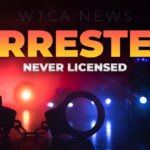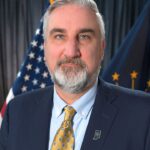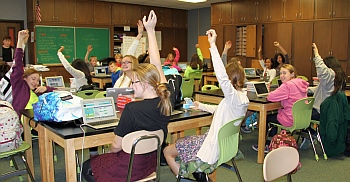 In honor of Computer Science Education week, Lincoln Junior High School is incorporating “code” into the classroom this week school wide.
In honor of Computer Science Education week, Lincoln Junior High School is incorporating “code” into the classroom this week school wide.
Principal Reid Gault said, “This week we will spend the maximum time possible with our students to teach them what coding is all about. Although there are numerous students here at Lincoln who are already coding in such classes as Interactive Media for instance, I believe it is important to introduce all of our students to the world of computer science and coding.”
On Tuesday and Wednesday, Lincoln Junior High School teachers are encouraged to allow their students to become part of the “Hour of Code” national campaign that has earned the popular hashtag #HourOfCode on social media sites such as Twitter, Instagram, and Facebook.
According to the organization’s website, Code.org, the “Hour of Code” campaign was introduced last year with the aim of convincing all students to try just one hour of programming and showing them that anyone can learn the basics. As part of the campaign, the organization created a website that compiles many different hour-long tutorials, most were created specifically for the campaign.
By a show of hands in Mrs. Darlene Derifield’s noon to 12:30 half-hour “Max period” class on Tuesday afternoon, more than half of her seventh and eighth grade students said they have never learned about code in the past nor have they ever coded before today.
Derifield said, “Max period is similar to a study hall period. At the beginning of Max time we watched a quick introduction video on code.org that explained what coding is and how students can learn how to code by using code.org to design video games among other things.”
She went on to say, “The subject is a little intimidating at first, because it is hard to explain.” Meanwhile, down the hall eighth grade student Andrew Jacob who has been coding for the last year plus agrees with Mrs. Derifield that coding is hard to explain.
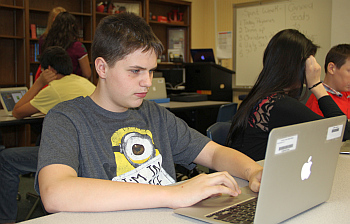 After careful thought he said, “I think coding can best be described as directions for what you want to happen or what you want to be seen on a computer screen or actions you want to happen in a video game.” He was proud to say he learned how to code in Mrs. Paula Neidlinger’s Humanities class last year when he was in seventh grade. He said he really spent a lot of time programing video games over the summer and continues to do so now.
After careful thought he said, “I think coding can best be described as directions for what you want to happen or what you want to be seen on a computer screen or actions you want to happen in a video game.” He was proud to say he learned how to code in Mrs. Paula Neidlinger’s Humanities class last year when he was in seventh grade. He said he really spent a lot of time programing video games over the summer and continues to do so now.
Jacob said he really doesn’t know if he could imagine a career in coding, but what he really likes about coding is, “The only limit with coding a video game is your imagination.”
Jacob is in Mrs. Paula Neidlinger’s Max period class this year and is enjoying the added attention coding is getting at Lincoln this week.
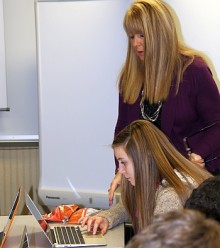 Neidlinger said, “Like last year in her Humanities class, this year students are allowed to have what she calls “genius time”. Coding is one of the activities students can do during genius time on Fridays.” She went on to say, “Coding is something this generation of students are going to have to know in order to succeed in the world. It is rewarding to know this week our entire student body is learning what my Interactive Media students and Humanities students learn each year by using Code.org tutorials and programs.”
Neidlinger said, “Like last year in her Humanities class, this year students are allowed to have what she calls “genius time”. Coding is one of the activities students can do during genius time on Fridays.” She went on to say, “Coding is something this generation of students are going to have to know in order to succeed in the world. It is rewarding to know this week our entire student body is learning what my Interactive Media students and Humanities students learn each year by using Code.org tutorials and programs.”
The Code.org website states, “Tens of millions of students of all ages and backgrounds have tried an Hour of Code, a one-hour introduction designed to demystify computer science and show that anybody can learn the basics.”
Launched in 2013, Code.org® is a non-profit dedicated to expanding participation in computer science by making it available in more schools, and increasing participation by women and underrepresented students of color. Our vision is that every student in every school should have the opportunity to learn computer science. We believe computer science and computer programming should be part of the core curriculum in education, alongside other science, technology, engineering, and mathematics (STEM) courses, such as biology, physics, chemistry and algebra.
This year, so far 58-Million students worldwide have tried the Hour of Code. Code.org® is hoping to reach 100 million students with its international campaign in 2015. On Monday of this week, President Barack Obama made news taking the Hour of Code challenge and learning how to code from 13-year-old students who were visiting the White House.
FYI: VIDEO Reference for above information Obama info: https://www.facebook.com/Code.org?fref=nf
Gault said, “We want our students to be exposed to coding and learning the basics so they understand what coding is and how it relates to careers today. We believe the basics of coding are truly relevant to any career in the 21st century and this is exactly why incorporating coding during Computer Science Education week here at Lincoln Junior High School is so important.”
http://csedweek.org/
Story and photos provided by the Plymouth Community School Corporation











